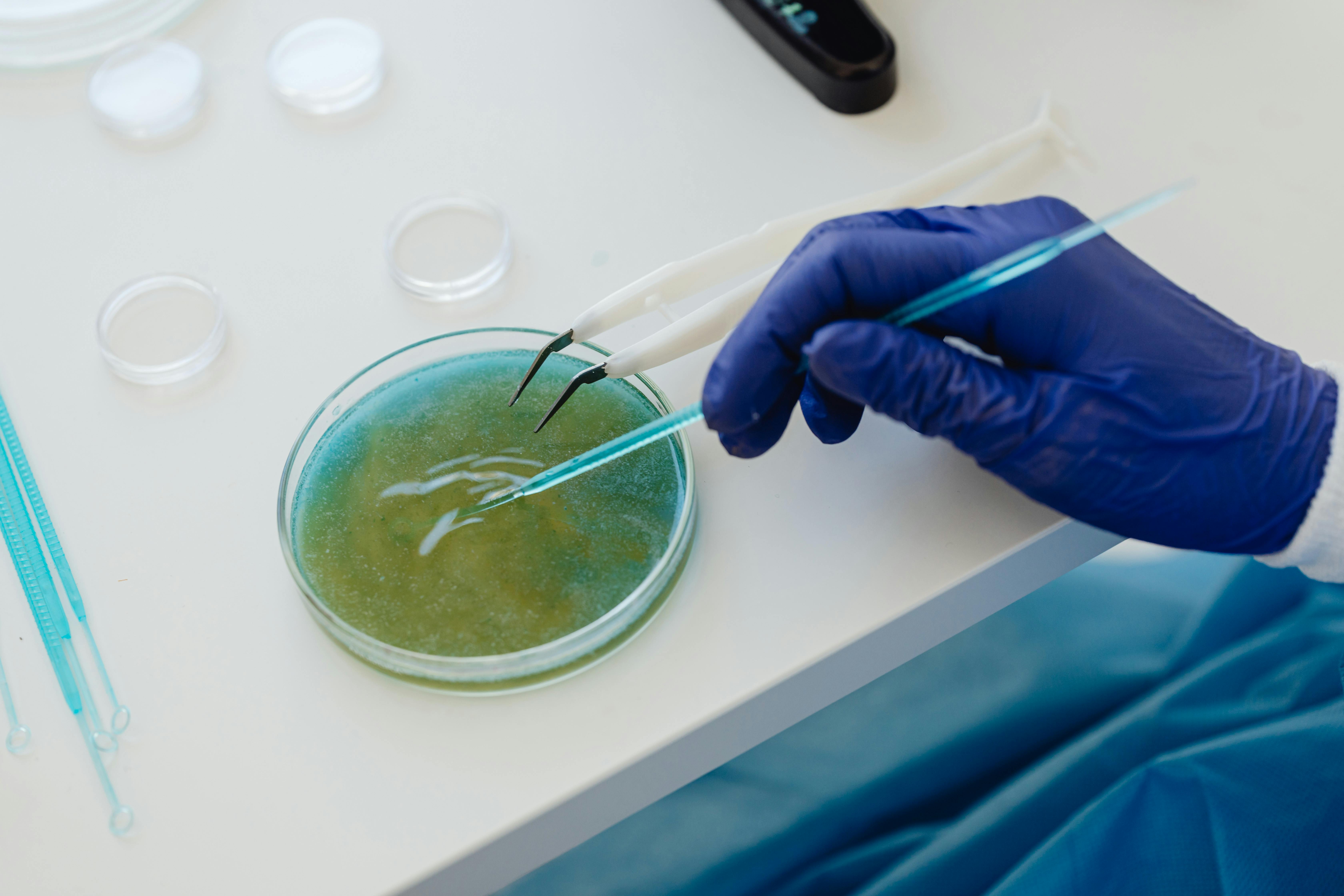
The Power of Testing: Unveiling the Benefits and Pros & Cons
To begin with, testing starts at the early stages of product development by evaluating various ideas, concepts, and options. It helps in assessing feasibility and eliminating unsuitable or flawed ideas before committing significant resources.
One important aspect of testing is identifying and mitigating any possible shortcomings or errors in a product. This involves conducting meticulous checks on individual components, functionalities, interfaces, and overall system behavior. These tests aid in uncovering defects, bugs, or issues that might affect the performance, usability, or security of the product.
Moreover, testing plays an invaluable role in validating whether the product meets customers' requirements and expectations. By conducting user acceptance tests (UAT) and gathering feedback from potential users or target market, developers can refine and enhance the product's features and capabilities. Regular communication with users during testing helps gain insight into their mindset and allows necessary adjustments catering to their needs.
Testing helps build confidence among stakeholders in the product’s quality and reliability. Successful testing instills trust in end-users that a robust solution or product has been thoroughly evaluated to meet their demands. This trust becomes pivotal in gaining an edge over competitors and strengthening overall customer satisfaction.
It is worth noting that testing is not limited to functional aspects alone. Non-functional attributes like performance, scalability, compatibility, and security are also critically verified through rigorous testing. Thorough evaluation of these non-functional qualities empowers developers to eliminate bottlenecks or vulnerabilities well in advance.
Testing acts as a protective layer against negative repercussions associated with inadequate quality or defects in a product. Detecting and rectifying issues early through continuous integration tests, system tests, regression tests, etc., saves efforts and costs related to unforeseen problems that may arise later during production or deployment.
For the success of a product, testing should be seen as an ongoing process rather than a one-time activity. Even after launching a product, post-release testing helps in monitoring performance in real-world scenarios and quickly addressing any emerging issues. Updating and maintaining a product based on comprehensive data gathered from various tests can lead to long-term customer satisfaction.
In conclusion, the crucial role of testing in product development cannot be underestimated. Testing ensures high-quality, reliable, and successful products by identifying flaws, meeting user requirements, enhancing non-functional attributes, building trust among stakeholders, and enabling continuous improvement. Its influence can shape the destiny of a product by guaranteeing its credibility and competitiveness in the market.
 The Benefits of Implementive Testing Strategies in EducationImplementing effective testing strategies in education comes with several benefits for both students and educators. These techniques not only assess the students' understanding but also enhance their overall learning experience. Let's explore the advantages of employing implementive testing strategies in education.
The Benefits of Implementive Testing Strategies in EducationImplementing effective testing strategies in education comes with several benefits for both students and educators. These techniques not only assess the students' understanding but also enhance their overall learning experience. Let's explore the advantages of employing implementive testing strategies in education.One significant benefit is that these strategies allow educators to evaluate students' progress accurately. By utilizing various types of tests such as quizzes, exams, and assignments, teachers gain insights into how well the students have grasped the concepts. This information helps identify areas where students may need additional support or guidance, facilitating personalized instruction tailored to their needs.
Another advantage is that regular testing supports active learning, promoting critical thinking and problem-solving skills. When students are faced with questions that require analysis and reasoning, it stimulates their mental abilities and encourages them to engage actively with the material. Test-taking can be seen as an opportunity for students to construct knowledge actively rather than being a passive recipient of information.
Moreover, implementive testing strategies provide valuable feedback to both students and educators. When assessments are designed thoughtfully, they offer insights into areas where students excel and areas where improvement is required. Constructive feedback helps students understand their strengths and weaknesses, enabling them to focus their efforts on areas that need development. Simultaneously, this feedback assists educators in adjusting their teaching methods appropriately to optimize learning outcomes.
Furthermore, testing improves long-term retention of information. Regularly assessing student knowledge reinforces the concepts taught in class by requiring active recall. This practice enhances memory consolidation, making it more likely that information will be retained over time. By strategically spacing out assessments over weeks or months, teachers can assist students in retaining knowledge on a deeper level.
Additionally, implementive testing strategies promote essential study skills and develop effective learning habits. Practice exams and review sessions before tests encourage self-regulated learning, as students learn how to manage their time efficiently, organize their study materials effectively, and employ appropriate revision techniques. Consequently, these skills transcend beyond the immediate testing period and contribute to a student's long-term academic success.
Lastly, tests can help educators evaluate the effectiveness of their teaching methods and curriculum. Analyzing student performance by tracking results, discussing common challenges, and recognizing patterns in the data enables instructors to assess whether their instructional techniques are successful individually or within a specific cohort. It aids in identifying areas of improvement or modifications needed in the curriculum to maximize educational outcomes.
In summary, implementing effective testing strategies in education provides various advantages for both students and educators. These strategies accurately assess students' progress, support active learning, provide constructive feedback, enhance long-term retention, promote study skills and habits, and assist educators in refining their teaching methods. By incorporating well-designed implementive tests into the educational system, students' learning experiences can be greatly enhanced, ultimately fostering academic success.
 Automated vs. Manual Testing: An Objective ComparisonAutomated vs. manual testing is a critical topic in the software development industry. Both approaches serve different purposes and have their own merits and drawbacks. In this blog post, we will analyze these two testing strategies objectively without using numbered lists.
Automated vs. Manual Testing: An Objective ComparisonAutomated vs. manual testing is a critical topic in the software development industry. Both approaches serve different purposes and have their own merits and drawbacks. In this blog post, we will analyze these two testing strategies objectively without using numbered lists.Automated testing refers to the use of specialized tools and scripts to execute tests automatically. It involves software tools that run pre-defined test cases, compare actual outcomes with expected results, generate detailed reports, and identify any deviations or defects in the system. This type of testing requires the development of scripts or code that instructs the tools on what actions to perform and what results to expect.
One major advantage of automated testing is its efficiency. Test scripts can perform repetitive tasks much faster than manually executed tests, thereby increasing productivity and saving time for testers. Additionally, they can be run frequently and on multiple platforms simultaneously, ensuring consistency across different environments.
Moreover, automation allows for better coverage by executing a large number of test cases within a short span of time. This helps in uncovering defects that might go unnoticed during manual testing due to human error or limited resources. Furthermore, once automated test scripts are created for a specific feature or functionality, they can be re-used for future regression tests with minimal effort.
However, automated testing also has certain limitations. It is not suitable for scenarios where a human's judgment or intuition is required, such as user experience (UX) evaluations. Automated tests work based on predefined inputs and expected outputs and may miss important usability issues that only human testers notice.
Additionally, automating tests can be time-consuming at the initial stage. Writing reliable scripts demands technical expertise and incurs extra effort in maintaining them when software requirements change or new features are added. Therefore, it is essential to carefully consider the complexity of the project and its potential lifespan before investing heavily in automated testing.
On the other hand, manual testing relies solely on human interaction with the system being tested. This approach allows a tester to directly interact with the software, explore its functionalities from an end-user perspective, and assess its overall behavior. Manual testing enables testers to identify issues that might be challenging to automate or require subjective evaluation.
One significant advantage of manual testing is the flexibility it offers during exploratory testing. Testers can adapt their evaluation strategies, ask questions about unclear requirements, and spot potential defects by observing real-time system responses.
Manual testing is also advantageous in complex scenarios or when handling visually oriented aspects. Testers can identify design-related issues, usability problems, or inconsistencies in UI/UX, which may be overlooked by automated tests. Additionally, it requires fewer technical skills to perform manual testing compared to automated testing.
However, manual testing has its own limitations too. Its efficiency reduces as the size and complexity of the project increase. Manually executing a large number of test cases repeatedly can be tedious, time-consuming, and prone to errors due to human fatigue and oversight. Moreover, resource constraints may limit the number of possible test combinations that can be executed manually.
In conclusion, there is no one-size-fits-all approach when deciding between automated and manual testing. Both strategies have their own unique strengths and weaknesses. Consequently, a combination of both methods is often employed to achieve comprehensive test coverage while maximizing efficiency and accuracy.
 How Continuous Testing Can Transform the Software Development Life CycleContinuous testing is a crucial practice that can significantly impact the software development life cycle (SDLC) for the better. This method involves incorporating automated testing at every stage of the SDLC, from early development to deployment and beyond.
How Continuous Testing Can Transform the Software Development Life CycleContinuous testing is a crucial practice that can significantly impact the software development life cycle (SDLC) for the better. This method involves incorporating automated testing at every stage of the SDLC, from early development to deployment and beyond.By adopting continuous testing, software development teams can identify defects and issues much earlier in the process, allowing for prompt remediation. This approach differs from traditional testing processes, which tend to focus on a single phase or stage towards the end of the SDLC.
One significant advantage of continuous testing is its ability to provide immediate feedback on code quality. Automated test scripts are executed regularly, ensuring instant detection of bugs, ambiguities, or conflicts. Consequently, developers are promptly notified about issues, enabling them to rectify problems swiftly before they escalate further.
In addition to early issue detection, continuous testing greatly improves quality assurance efforts throughout the SDLC. As tests become ingrained into the development pipeline, it enforces higher code standards and promotes strict adherence to requirements. This results in the production of higher-quality software with fewer defects.
Another noteworthy advantage is how continuous testing enables faster and more frequent software releases. By automating tests, organizations can assess large codebases rapidly and confidently release updates at shorter intervals. The continuous feedback resulting from this process allows developers to maintain a continuous cycle of innovation and improvement.
Continuous testing also fosters efficient bug resolution capabilities. When issues arise during development or deployment, having a robust automated testing ecosystem makes issue diagnosis quicker and easier. Debugging becomes simpler since tests are already available for relevant components or modules, providing contextual insights to trace problems efficiently.
Overall, continuous testing boosts efficiency by saving time and resources in comparison to traditional manual testing methodologies. Automating repetitive tests enables testers to focus their energy on exploratory and creative tasks rather than deploying redundant efforts. Ultimately, this leads to faster and more accurate defect identification and provides developers with valuable time to enhance other aspects of their work.
Finally, continuous testing promotes collaboration among teams involved in the SDLC. When individuals across development, testing, and operations actively participate in the continuous testing approach, knowledge sharing becomes more seamless. Teams can identify bottlenecks and challenges earlier, streamline workflows, and collectively work towards enhancing software quality.
In conclusion, incorporating continuous testing into the software development life cycle offers numerous benefits ranging from early issue detection to faster deployments and improved software quality. This iterative testing practice transforms the SDLC, ensuring robust codebases that meet or exceed user expectations while fostering a collaborative development environment.
 The Psychological Impact of Testing in Learning EnvironmentsThe Psychological Impact of testing in Learning Environments
The Psychological Impact of Testing in Learning EnvironmentsThe Psychological Impact of testing in Learning EnvironmentsTesting is a ubiquitous part of our educational systems. From quizzes to standardized exams, tests play a crucial role in measuring students' knowledge and assessing their understanding of various subjects. However, beyond the evaluation aspect, testing can have profound psychological effects on learners that extend beyond mere grades.
Firstly, tests can create a sense of anxiety among students. The pressure to perform and meet expectations can induce stress and worry, leading to increased levels of apprehension. This anxiety can stem from various sources – fear of failure, academic competition, or even prior negative experiences related to testing. As a result, it can impair students' ability to concentrate, hinder information retrieval, and undermine overall performance.
Furthermore, testing can influence students' self-esteem and self-confidence. A poor test result may lead individuals to question their abilities and intellectual worth. Similarly, marking achievements solely based on test scores may create an unhealthy mindset centered around external validation and comparative success. Consequently, students might develop a fixed mindset instead of embracing a growth mindset that encourages learning from mistakes and valuing the process over outcomes.
Moreover, repeated testing can impact motivation levels. While some individuals may feel driven to excel in the face of challenges, others may become demotivated or disinterested due to perceived failure. High-stakes exams that hold significant consequences for future opportunities can intensify this effect immensely. Thus, it is essential to strike a balance between assessment requirements and supporting intrinsic motivation to reduce potential negative impacts.
Tests also hold the power to shape students' attitudes toward subject matters and learning as a whole. An excessive focus on testing outcomes can limit the joy of exploration and curtail curiosity-driven learning experiences. This tunnel vision towards performance-based evaluation may inadvertently discourage creativity, critical thinking skills, and a deeper comprehension of concepts beyond what is required to pass exams.
However, it's important to recognize that the psychological impact of testing is not inherently negative. Constructive feedback, formative assessments, and the opportunity for improvement can help alleviate anxiety and promote a growth mindset. Giving students a sense of control and involvement in the evaluation process allows them to engage actively and develop their metacognitive skills.
In conclusion, testing in learning environments carries substantial psychological implications for students. Acknowledging and addressing these effects is crucial in promoting a healthy educational atmosphere that values students' holistic growth, individual progress, and intrinsic motivation. By considering alternative assessment methods, emphasizing feedback rather than grades, and nurturing a supportive student-teacher relationship, we can mitigate the potentially damaging influence that testing may have on learners.
 Weighing the Pros and Cons of Standardized Testing in SchoolsWeighing the Pros and Cons of Standardized testing in Schools
Weighing the Pros and Cons of Standardized Testing in SchoolsWeighing the Pros and Cons of Standardized testing in SchoolsStandardized testing, a widely-debated topic within the education system, has brought about various perspectives regarding its effectiveness and impact on students. Critics argue that these exams put undue pressure on both teachers and students alike, leading to a narrowed curriculum and an increased focus on test preparation rather than holistic learning. Supporters, on the other hand, believe that standardized tests provide valuable data for evaluating school performance and measuring student progress. To gain a deeper understanding of this complex issue, let's examine the pros and cons of standardized testing in schools.
Pros:
1. Objective Assessment: Standardized tests are designed to have a consistent format and level of difficulty across different schools and districts, providing an objective measure of student abilities. This allows for fair comparisons between students, schools, and regions.
2. School Accountability: By analyzing test results, administrators can discern how well their school is meeting certain educational standards. Performance data from standardized tests plays a role in holding schools accountable for their provision of quality education.
3. Identifying Struggling Students: Through standardized testing, educators can identify students who may need extra support or resources. Test results can help in refining teaching methods and implementing targeted interventions to ensure each student's needs are met.
4. College Admissions: Standardized tests like the SAT or ACT are commonly used by colleges as part of their admissions process. These exams provide universities with comparable information when evaluating applicants from various backgrounds and educational settings.
Cons:
1. Narrow Curriculum: Critics contend that the emphasis placed on standardized tests can lead to a narrower curriculum focus across subjects. Teachers may feel pressured to prioritize test-specific content at the expense of broader, creative or experiential learning experiences.
2. Teaching to the Test: The prominent use of standardized tests often leads to teaching strategies centered around exam preparation rather than fostering critical thinking skills or comprehensive understanding. This approach undermines educational goals that go beyond mere test performance.
3. Stress and Inequality: Some argue that standardized tests can increase stress levels among students. Frequently, students from disadvantaged backgrounds may experience added pressure due to a lack of access to test preparation resources or support systems often available to their more privileged counterparts.
4. Limited Assessment Scope: Standardized testing primarily measures academic outcomes in subjects like math and reading, thereby overlooking skills and talents that can't be quantified through multiple-choice questions, such as creativity, problem-solving abilities, or real-world application of knowledge.
To conclude, standardized testing possesses both advantages and drawbacks when implemented in educational environments. While it offers an impartial evaluation tool for assessing student and school performance, it must be used judiciously to prevent compromising the overall quality of education and supplementing standardized exams with assessments that capture the broader spectrum of student abilities seems crucial. Balancing these considerations is essential in creating a well-rounded approach that elevates the educational experience of all students.
 Exploring the Efficiency of Randomized Control Trials in ResearchWhen it comes to conducting research in the field of science and medicine, one of the most commonly used methods is a randomized control trial (RCT). This type of study design allows researchers to compare the effectiveness of different interventions or treatments by randomly allocating participants into different groups. The main objective of an RCT is to determine causal relationships between a specific treatment and its outcomes.
Exploring the Efficiency of Randomized Control Trials in ResearchWhen it comes to conducting research in the field of science and medicine, one of the most commonly used methods is a randomized control trial (RCT). This type of study design allows researchers to compare the effectiveness of different interventions or treatments by randomly allocating participants into different groups. The main objective of an RCT is to determine causal relationships between a specific treatment and its outcomes.Randomized control trials require careful planning and execution to ensure accurate and reliable results. First, researchers must define their research question and identify the population they want to study. For example, if a new drug is being tested, the population might be patients with a specific medical condition.
Next, researchers randomly assign participants to two or more groups. The control group does not receive any treatment or receives a placebo, while the other groups are given the intervention being tested. Randomization is crucial since it helps eliminate bias and ensures that any differences in outcomes between groups are solely due to the treatment received.
To accurately measure the efficacy of an intervention, researchers collect data on both the control and experimental groups. This data can include various metrics such as symptom improvement, survival rates, or overall quality of life. Statistical analysis techniques are then employed to compare these outcomes between the different groups and to assess whether any observed differences are statistically significant.
By using randomization, RCTs aim to evenly distribute both known and unknown confounding variables among groups, reducing biases that could influence results. Additionally, blinding techniques can be applied where participants or researchers involved in data analysis are unaware of which group they belong to. Blinding helps minimize subjective interpretation and biases during data collection, ensuring objectivity throughout the trial.
Randomized control trials have become an essential tool for shaping evidence-based medicine. Doctors, healthcare professionals, and policy-makers rely heavily on effective RCTs to make informed decisions regarding patient treatments or public health initiatives. The results from multiple well-conducted RCTs are often combined in systematic reviews and meta-analyses to provide a comprehensive overview of the effectiveness of interventions.
However, it is important to note that randomized control trials also have limitations. They can be time-consuming, expensive, and sometimes involve ethical considerations. Additionally, some studies may not be feasible or ethical to conduct as an RCT due to the nature of the research question or study population.
In conclusion, exploring the efficiency of randomized control trials in research is essential for understanding their importance and limitations. These trials provide a robust scientific methodology that helps establish causal relationships between treatments and outcomes. Understanding their principles, execution, and impact facilitates informed decision-making in healthcare and guides the development of evidence-based practice.
 Usability Testing: Key to Enhancing User Experience in Apps and WebsitesUsability testing plays a pivotal role in enhancing the overall user experience of apps and websites. It is a comprehensive process which assesses the ease of use, efficiency, and effectiveness of these digital interfaces for target users. By conducting usability tests, designers and developers can identify and address potential usability issues, allowing for improvements that enable smooth and intuitive interactions.
Usability Testing: Key to Enhancing User Experience in Apps and WebsitesUsability testing plays a pivotal role in enhancing the overall user experience of apps and websites. It is a comprehensive process which assesses the ease of use, efficiency, and effectiveness of these digital interfaces for target users. By conducting usability tests, designers and developers can identify and address potential usability issues, allowing for improvements that enable smooth and intuitive interactions.During a usability test, a representative group of users is involved to provide real feedback based on their experience with the app or website. This approach enables a more accurate understanding of how users interact with the interface and gauges their satisfaction levels. Several essential aspects make usability testing key to enhancing user experience:
1. Identifying Usability Issues: Usability testing identifies various issues that may hinder users' ability to navigate, comprehend, and utilize interfaces effectively. This may include confusing layouts, hidden functionalities, or unclear instructions. By uncovering such issues, designers can address them early in the development cycle, ultimately improving the user experience.
2. Evaluating User Interaction: Usability tests provide insights into how users interact with an app or website. Observing the users' actions helps identify patterns in their behavior, highlighting potential bottlenecks or areas for improvement. Designers can then optimize navigation paths and tailor the interface to match users' mental models.
3. Refining Design for Simplicity: Through usability testing, the complexity of an interface can be evaluated, guiding designers towards simplification. By ensuring that interfaces are easy to understand, learnable, and intuitive, designers can remove unnecessary features or steps which might confuse users. A simplified design reduces cognitive load and allows users to complete tasks efficiently.
4. Pinpointing Performance Issues: Usability testing also helps identify performance-related issues like slow-loading pages or time-consuming tasks. These hindrances impact user experience significantly by frustrating and discouraging users from engagement. Addressing these setbacks ensures that apps and websites perform smoothly for optimal user satisfaction.
5. Gathering User Feedback: Usability testing gathers subjective feedback directly from users, providing valuable insights into their perceptions, preferences, and expectations. Understanding user preferences helps shape design decisions while meeting their specific needs. This feedback loop helps in creating tailored experiences, resulting in higher user satisfaction and engagement.
6. Optimizing Conversion Rates: A well-rounded usability test has the potential to uncover and resolve pain points that may hinder a site or app's conversion rates. By streamlining the user journey, simplifying form interactions, or clarifying calls-to-action, designers can eliminate obstacles that impede users from taking desired actions. Enhanced conversions drive business revenue and reinforce positive user experiences.
7. Promoting User-Centric Design: Usability testing holds user satisfaction as a priority throughout the development process. It emphasizes empathy and advocates for a holistic approach to designing interfaces based on evolving user expectations. This human-centered design ethos forms the foundation for creating meaningful customer experiences across various digital platforms.
In summary, usability testing is imperative for enhancing the user experience of apps and websites. By identifying usability issues, evaluating user interaction, refining designs for simplicity, addressing performance issues, gathering feedback, optimizing conversion rates, and promoting user-centric design, usability testing empowers designers to create intuitive and delightful experiences for their target audience.
 The Evolution and Future Trends of Testing in Cybersecurity The Evolution and Future Trends of testing in Cybersecurity
The Evolution and Future Trends of Testing in Cybersecurity The Evolution and Future Trends of testing in Cybersecurity Since the advent of technology, the need for robust cybersecurity practices has been imperative. As the digital landscape rapidly expands, the threats to security have likewise increased in scale and sophistication. In order to effectively protect systems and data from malicious attacks, it is vital for cybersecurity professionals to adopt a proactive stance by continually evolving their testing methodologies.
In its earlier stages, testing in cybersecurity primarily revolved around vulnerability assessments and penetration testing. Organizations would identify weak points in their systems by conducting comprehensive vulnerability scans, notifying them of any potential exploits or weaknesses that malicious actors might target. Penetration testing followed, as an attempt to exploit these weak points so that organizations could assess the effectiveness of their defenses and improve accordingly.
However, as hackers continued to enhance their tactics and exploit new vulnerabilities, conventional testing methods became insufficient in guaranteeing full system protection. This led to the evolution of more advanced testing techniques aimed at simulating real-world attacks and better defending against them.
One prominent development in cybersecurity testing is the emergence of red teaming exercises. Red teaming involves employing skilled professionals who act as adversaries and attempt to exploit systems just like malicious actors would. This comprehensive approach enables organizations to gain a realistic perspective on the effectiveness of their security measures, while also identifying potential weaknesses or blind spots.
Another exciting advancement in cybersecurity testing revolves around AI-powered technologies. Machine learning algorithms can be utilized to identify patterns and anomalies within large volumes of data, detecting behavioral patterns associated with malicious activities or unauthorized access attempts. By leveraging AI-driven tools for automated monitoring and detection, organizations can enhance their ability to detect and respond to threats promptly.
As we look towards the future, continuous improvement in cybersecurity testing practices will remain crucial. Organizations need to stay proactive and adapt rapidly to emerging threats in order to maintain adequate protective measures against cyberattacks. Alongside traditional approaches, new strategies such as crowd-sourced bug bounty programs allow the cybersecurity community to collectively contribute towards finding vulnerabilities and recommending solutions.
The need for constant enhancement of cybersecurity testing methodologies will persist indefinitely. IoT (Internet of Things) devices, which are increasingly integrated into various contexts of our lives, add an additional layer of complexity and vulnerability as they introduce a larger attack surface. As these devices become more prevalent, specialized testing approaches targeting their unique security challenges will become imperative for ensuring overall system resilience.
In conclusion, as cyber threats continue to evolve, the evolution of cybersecurity testing techniques becomes an ongoing necessity. The adoption of comprehensive red teaming exercises, AI-powered tools, and emerging strategies will play a vital role in providing robust defense against modern cyberattacks. By continually adapting and upgrading testing practices, organizations can effectively safeguard their systems and data from the evolving threat landscape and ensure a safer digital future.
 Ethical Considerations in Animal Testing: A Balanced ViewpointWhen discussing ethical considerations in animal testing, it is essential to acknowledge that opinions on the matter vary widely. Some argue that using animals for scientific research is necessary to advance medical knowledge and develop new treatments for human diseases. Others, however, take a more critical stance, questioning the morality of subjecting animals to potentially harmful procedures for human benefit.
Ethical Considerations in Animal Testing: A Balanced ViewpointWhen discussing ethical considerations in animal testing, it is essential to acknowledge that opinions on the matter vary widely. Some argue that using animals for scientific research is necessary to advance medical knowledge and develop new treatments for human diseases. Others, however, take a more critical stance, questioning the morality of subjecting animals to potentially harmful procedures for human benefit.One central aspect often discussed is the concept of animal rights and whether animals should be considered equal to humans. Advocates for animal rights argue that animals have the right to live free from exploitation and suffering, which includes being used for experimentation. They believe that using animals as test subjects devalues their lives and disregard their intrinsic worth.
Another important factor in this discussion is the validity and necessity of using animals in tests. Proponents of animal testing maintain that animals provide crucial insights into the effectiveness and potential hazards of new drugs, vaccines, or medical procedures. Many pharmaceuticals and chemicals still require testing on whole organisms to determine safety levels before moving forward to human trials.
Alternatives to animal testing, such as in-vitro experiments and computer simulations, are continually being developed. Supporters argue that by reducing reliance on animal models, researchers can minimize moral concerns while obtaining valuable results with advanced technologies. However, critics often contend that these alternatives cannot entirely replace animal models and still have limitations in simulating complex biological systems.
An additional consideration is the ethical guidelines and regulations surrounding animal testing. Governments and organizations have established stringent rules affirming the protection and well-being of research animals. These measures include protocols for pain management, minimizing distress, and obtaining informed consent when applicable. The Animal Welfare Act in the United States is a notable example supporting appropriate treatment and care for research animals.
To strike a balanced viewpoint on ethical considerations in animal testing, one must acknowledge the necessity of some animal studies while advocating for continuous efforts in refining and reducing the use of animals in research. Initiatives promoting an evidence-based approach to evaluating each study's ethical worth, as well as promoting transparency in research practices and results, are crucial to fostering an open dialogue surrounding animal testing.
Ultimately, this complex topic necessitates a thoughtful examination that weighs both the potential scientific benefits and the ethical concerns raised. By acknowledging different perspectives and remaining open to ongoing advancements in research methods, it may become possible to strike a balance between supporting scientific progress and respecting animal welfare.
 Review: The Best Testing Tools for Developers in 2023In 2023, developers have a plethora of testing tools at their disposal to ensure the smooth functioning and quality of their software products. This review highlights some of the best testing tools that developers can leverage for maximum efficiency and effectiveness.
Review: The Best Testing Tools for Developers in 2023In 2023, developers have a plethora of testing tools at their disposal to ensure the smooth functioning and quality of their software products. This review highlights some of the best testing tools that developers can leverage for maximum efficiency and effectiveness.First up is "Selenium," an open-source tool widely recognized as a powerful automation framework. Selenium allows developers to conduct automated tests across different browsers and platforms. Its compatibility and flexibility make it an industry favorite.
Next on the list is "Jenkins," another popular open-source automation server that enables developers to build, test, and deploy their code continuously. Jenkins provides numerous plugins and integrations, making it a must-have tool for streamlining the development workflow and ensuring code integrity through automated testing.
For mobile application testing, "Appium" shines as an open-source platform that is compatible with different operating systems and programming languages. Appium supports both native and hybrid mobile applications, allowing developers to create robust tests across various devices with ease.
Choosing the right API testing tool can be critical, and "Postman" comes to the rescue. Postman offers a user-friendly interface, allowing developers to design, test, and monitor APIs effortlessly. Its extensive features such as request/response logging, automated testing, and collaboration capabilities make it an invaluable asset in modern API development.
Among performance-testing tools, "Apache JMeter" assists developers in assessing the performance of web applications under various loads. JMeter enables comprehensive load testing by simulating real-life scenarios through its distributed architecture and support for various protocols such as HTTP, JDBC, FTP, SMTP.
Furthermore, "Cypress" provides an end-to-end testing solution primarily for web applications. This JavaScript-based automation tool distinguishes itself with an elegant syntax and intuitive API. Developers appreciate Cypress for its unique ability to also run tests directly in the browser, fostering faster debugging and overall efficiency.
Don't forget about "JUnit," a widely used framework for unit testing in Java applications. JUnit facilitates the creation of test cases, execution, and management of tests, ensuring the reliability of code components before integrating them into complex software systems.
Lastly, "CodeceptJS" appears as an innovative framework that allows developers to write living documentation in JavaScript. CodeceptJS embraces a behavioral-driven development (BDD) approach, delivering concise and readable tests while simultaneously driving the development process forward.
These best testing tools exemplify the dynamic landscape in software development for 2023. From automation frameworks like Selenium and Appium to performance-testing tools like Apache JMeter, developers have a vast array of options to elevate their testing processes and ensure high-quality software releases.
 How Test Marketing Shapes Consumer Products and Servicestest marketing plays a crucial role in shaping consumer products and services. It is essentially real-world experimentation aimed at gauging the market response to a new product or service before it is launched on a larger scale. Rather than relying solely on assumptions, businesses can utilize test marketing to gather valuable insights and make informed decisions.
How Test Marketing Shapes Consumer Products and Servicestest marketing plays a crucial role in shaping consumer products and services. It is essentially real-world experimentation aimed at gauging the market response to a new product or service before it is launched on a larger scale. Rather than relying solely on assumptions, businesses can utilize test marketing to gather valuable insights and make informed decisions.One way test marketing shapes consumer products and services is by evaluating their potential success in the market. Through this process, companies can assess consumer attitudes, preferences, and overall acceptance of the product or service. By monitoring how target customers react, businesses can identify areas for improvement, anticipate demand, and modify their offerings accordingly.
Furthermore, test marketing allows companies to refine their marketing strategies. By conducting market research and analysis during the testing phase, businesses can gain valuable information about their target audience, including demographics, buying behavior, and purchasing power. This knowledge helps tailor marketing campaigns more effectively and reach potential customers with targeted messaging through various marketing channels.
Another significant benefit of test marketing is the opportunity to identify potential issues or setbacks that may arise with the product or service. By gathering feedback from consumers on aspects like functionality, usability, packaging, pricing, and branding, companies can iron out any flaws before launching on a larger scale. This proactive approach minimizes risks, enhances customer satisfaction, and ensures a positive user experience, positioning the product or service for long-term success.
Test marketing also plays a role in determining optimal pricing strategies. By gauging how consumers respond to various price points during testing, companies can assess pricing elasticity and determine an appropriate price range for their target market. This insight helps strike a balance between profitability and affordability while remaining competitive in the market.
Additionally, competitive analysis is an integral part of test marketing. Studying how consumers respond to competing products or services allows companies to differentiate themselves in terms of features or benefits. This information enables businesses to make necessary adjustments to align their offerings with consumer expectations while maintaining a unique selling proposition.
In conclusion, test marketing is a vital tool that shapes consumer products and services in numerous ways. It provides insights into market acceptance, helps refine marketing strategies, identifies potential issues, determines optimal pricing, and informs competitive differentiation. By conducting thorough testing and analysis before the official launch, companies can maximize their chances of success while delivering products and services that meet customer needs and desires.
 Genetic Testing and Personal Health: Discoveries vs Privacy ConcernsGenetic testing and Personal Health: Discoveries vs Privacy Concerns
Genetic Testing and Personal Health: Discoveries vs Privacy ConcernsGenetic testing and Personal Health: Discoveries vs Privacy ConcernsGenetic testing has brought tremendous advancements to healthcare, providing individuals with crucial information about their DNA and potential health conditions. As these tests become more accessible, questions regarding the balance between discoveries and privacy concerns are emerging. In this blog post, we will delve into the world of genetic testing and its consequences on personal health, discussing both its benefits and the concerns it raises.
Genetic testing explores a person's genes and can offer valuable insights into their health risks, ancestry, and even response to certain medications. Using this information, medical professionals can create personalized treatment plans, identify potential risk factors for inherited diseases, and contribute to preventive measures.
The ability to identify genetic markers associated with various health conditions allows individuals to make informed decisions about their lifestyle choices and possibly prevent or manage certain diseases. For example, if a person finds out that they carry a gene variant that increases the risk of developing early-onset Alzheimer's disease, they may take steps to mitigate these risks through regular cognitive exercises or lifestyle changes.
Another major benefit of genetic testing is its contribution to precision medicine—tailoring treatments based on an individual's unique genetic makeup. By analyzing the genetic profile of patients, doctors can prescribe medications that are more likely to be effective while avoiding potential adverse reactions. This empowers individuals in making informed decisions about their treatment options and enhances overall care provided by the healthcare system.
Despite these potential advantages, concerns surrounding privacy also deserve significant attention as genetic testing becomes more widespread. Genetic information is highly personal and sensitive since it reveals details about individuals' predispositions to diseases and potential inherited traits. Safeguarding this data becomes paramount in maintaining patients' trust in healthcare systems and technology companies providing genetic testing services.
One primary concern revolves around unauthorized access or hacking leading to breaches in patient confidentiality. Genetic information could be exploited for nefarious purposes such as discrimination in employment or insurance coverage. Fear of discrimination based on genetic predispositions might discourage individuals from undergoing testing, depriving them of potential health benefits.
Furthermore, there is an inherent risk of unintended consequences when it comes to discovering unexpected familial relationships. For instance, a paternity test taken for personal reasons could inadvertently uncover familial secrets leading to strain within relationships or causing emotional distress.
To address these concerns, laws and regulations must be in place that safeguard genetic privacy while allowing individuals to access and interpret their test results. Stricter security measures would ensure data protection, preventing any unauthorized access or misuse. Additionally, healthcare providers and genetic testing companies should educate individuals about the continued importance of medical confidentiality within this rapidly-evolving landscape.
Genetic testing indeed plays a significant role in empowering individuals and improving personalized healthcare. However, as technology continues to advance, it is crucial that we emphasize the importance of protecting privacy rights and ensuring that the benefits derived from genetic discoveries outweigh the potential costs to personal privacy.
In conclusion, genetic testing revolutionizes our approach to personal health by facilitating preventative measures and allowing for tailored treatments. Nonetheless, we must tread carefully, developing robust safeguards and ethical guidelines. By finding the right balance between discoveries and protecting personal privacy, we can harness the full potential of genetic testing for positive impacts on individual health and wellbeing.
 The Intersection of AI and Testing: Challenges and OpportunitiesThe intersection of AI and testing presents both challenges and opportunities, as these two fields merge to create a new paradigm in software quality assurance. Artificial Intelligence (AI) has already shown its potential in various domains, from voice assistants to autonomous vehicles. Similarly, the field of testing constantly evolves to keep up with the changing landscape of technology. In this blog, we will explore the challenges and opportunities that arise when AI and testing converge.
The Intersection of AI and Testing: Challenges and OpportunitiesThe intersection of AI and testing presents both challenges and opportunities, as these two fields merge to create a new paradigm in software quality assurance. Artificial Intelligence (AI) has already shown its potential in various domains, from voice assistants to autonomous vehicles. Similarly, the field of testing constantly evolves to keep up with the changing landscape of technology. In this blog, we will explore the challenges and opportunities that arise when AI and testing converge.One significant challenge that emerges at the intersection of AI and testing is the availability of high-quality training data. AI algorithms rely heavily on data to learn patterns and make predictions. For testing purposes, adequate training data is needed to ensure accurate predictions. Gathering and preparing this data can be a time-consuming process, especially if it needs to cover a wide range of scenarios. Furthermore, ensuring the quality of this data is vital to avoid bias or skewed results.
Another obstacle that arises in combination with AI and testing is the dynamic nature of software systems. Traditional testing approaches are typically designed for static environments, where tests are predefined based on expected outcomes. However, AI systems are capable of adapting and evolving over time, leading to a much more dynamic software landscape. This dynamic behavior brings new challenges to testers who need to verify system behavior as it continuously learns and improves its responses.
Integration between AI systems and testing tools can also present challenges. Ensuring compatibility with existing frameworks or legacy systems can pose difficulties. To fully leverage the benefits of AI in testing, adequate integration must be achieved without disrupting existing workflows or requiring substantial changes in infrastructure.
On the flip side, combining AI and testing provides exciting opportunities for improved test coverage and efficiency. AI can help identify potential risks or defects by automatically analyzing vast amounts of data and detecting patterns that humans may overlook. With AI-powered tools, developers and testers can analyze vast codebases or perform automated guided exploratory testing more efficiently than traditional manual methods.
AI can also assist in generating realistic test data, scenarios, or test cases. This helps create comprehensive test suites that cover a wider range of system behaviors, reducing the likelihood of overlooking critical scenarios. Moreover, AI can provide insights into how testing processes can be optimized and made more efficient by identifying bottlenecks or suggesting improvements.
Furthermore, the integration of AI techniques into automated test execution can potentially lead to enhanced fault detection and predictive maintenance of software systems. AI algorithms can continuously monitor and analyze system performance in real-time to detect potential anomalies or deviations from expected behavior, allowing proactive actions to prevent failures or degradation.
However, it's important to acknowledge that incorporating AI into testing doesn't replace human intelligence entirely. AI tools must be developed and refined under the supervision and validation of human experts. While AI can automate certain aspects of testing and assist in decision-making, human testers are still essential to provide critical thinking, interpret results, verify outcomes, and understand complex context-specific scenarios.
In conclusion, the intersection of AI and testing brings both challenges and opportunities. Overcoming hurdles related to data quality, the dynamic nature of software systems, and integration with existing frameworks is crucial for successful implementation. However, combining AI with testing opens up possibilities for enhanced test coverage, improved efficiency, proactive bug identification, and optimized testing processes. Striking the right balance between AI-powered automation and human expertise will be key to attain maximum benefits from this exciting fusion.
 Penetration Testing: Essential for Network Security or an Ethical Grey Area?Penetration testing: Essential for Network Security or an Ethical Grey Area?
Penetration Testing: Essential for Network Security or an Ethical Grey Area?Penetration testing: Essential for Network Security or an Ethical Grey Area?When it comes to securing the digital infrastructure of organizations, penetration testing plays a vital role. Often referred to as pen testing, it involves a preemptive and planned attempt to identify vulnerabilities in computer systems, networks, and applications. This practice aims to simulate real-world attacks by ethical hackers who attempt to exploit weaknesses in order to improve overall security.
The primary purpose of penetration testing is to help organizations identify potential vulnerabilities that can be exploited by attackers. By exposing these weak points, businesses can strengthen their network security measures and reduce the risk of unauthorized access, data breaches, and financial loss.
Ultimately, penetration testing is an essential component of any comprehensive security strategy. It allows organizations to stay one step ahead of cybercriminals and enhances their ability to respond effectively to any potential threats.
However, despite its obvious benefits in fortifying network security, penetration testing can sometimes be viewed as an ethical grey area. Some argue that the practice straddles the line of legality and potentially violates privacy rights if performed without proper authorization or fully informed consent.
Critics also raise concerns about ethical boundaries being crossed during penetration testing if attackers go beyond their agreed-upon scope and misuse or steal sensitive information. There have been cases where unauthorized pen testers have mistakenly caused system failures or compromised confidential records due to inadequate understanding or accidental actions.
Navigating the ethical landscape surrounding penetration testing requires clear boundaries and adherence to established guidelines and industry standards. Permission must be obtained from relevant parties before initiating a pen test to ensure that all involved individuals are fully aware of the process and its potential outcomes. Collaboration between testers, organization stakeholders, and legal experts is crucial for conducting ethically responsible pen tests that strike a balance between strengthening network security without violating privacy rights.
It is important for both businesses and ethical hackers engaged in penetration testing to understand that aligning strictly with legal frameworks and obtaining proper authorization is vital. By adhering to professional standards and taking necessary precautions, organizations can ensure the ethical execution of penetration testing and safeguard their digital assets while respecting privacy concerns.
In conclusion, while penetration testing undeniably plays an essential role in network security by identifying vulnerabilities and strengthening defenses against cyber threats, its ethical implications cannot be dismissed entirely. Organizations must prioritize obtaining proper authorization and informed consent before conducting pen tests. By following legal frameworks and industry best practices, penetration testing can be executed ethically, enhancing network security without undermining privacy rights.

